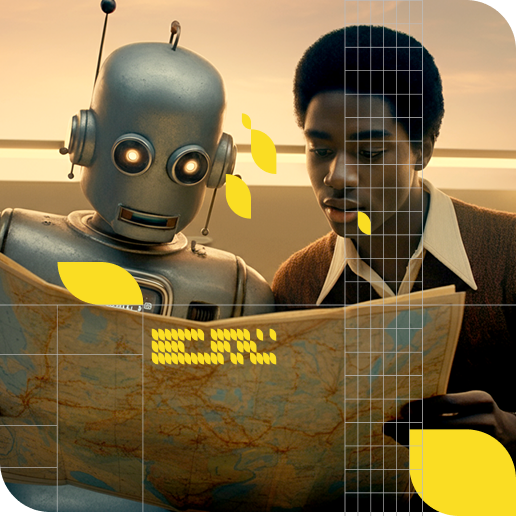
A study by Elon University found that 52% of U.S. adults now use LLMs, 34% of whom use them at least once a day, and that number is sure to grow. Whether you’re using them for work, fun, or handling personal chores and projects, AI systems have woven their way through our daily lives relatively quickly in the past couple of years.

The major players in the AI world all offer systems with different strengths and weaknesses and achieving visibility in them is what spawned the creation of Generative Engine Optimization (GEO). Understanding them will be the ongoing challenge for marketing professionals.
Google remains the dominant force in search, and its move into generative AI has only deepened that. Google searches increased by 20%+ in 2024, with ~373X more searches than ChatGPT. With AI Overviews, AI Mode, and the Gemini model family, Google is reshaping the search experience.
AI Overviews launched in May 2024, pulling content from across the web and synthesizing it into direct answers at the top of the search results page. What used to be the top position is now an AI-generated summary that users don’t need to click away from or scroll past. These summaries now appear in over 50% of searches.
AI Mode, which started rolling out to everyone in May 2025, lets users switch their entire search experience into an AI-first interaction where queries are answered conversationally and the generative interface becomes the default surface, not the links below it.
Gemini powers much of this behind the scenes, fine-tuning Google’s understanding of language, context, and user intent. Google’s CEO has also declared it to be the future of search, poised to eventually become the default search function.
For brands, this evolution means:
This has been referred to as the Great Decoupling in the SEO industry, first mentioned by X user Darwin Santos.
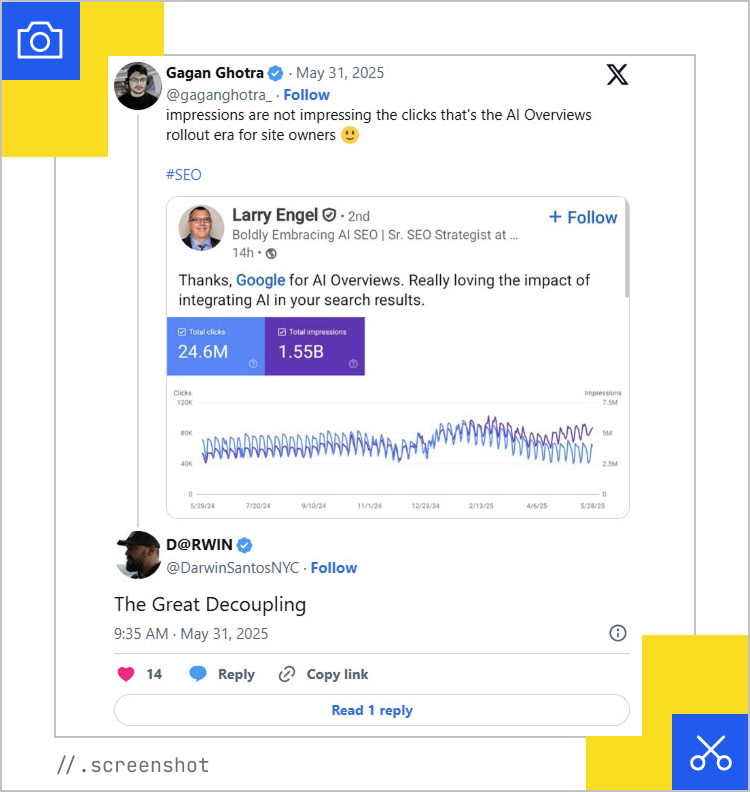
From May to July 2025, SimilarWeb data indicate that fewer than 20% of Google search users click a link to an external site, while fewer than 4% do so in AI Mode. This sharp gap in outbound clicks from AI Mode signals the need to completely redefine KPIs for measuring organic search performance.
That makes GEO critical. You’re optimizing to be part of the answer, to be cited (if at all) in an AI-generated summary, and to have your content recognized as trustworthy and authoritative by a generative model.
Launched in November 2022, ChatGPT became the first mainstream face of generative AI, showing people that AI can be a collaborative partner and not just a search tool.
ChatGPT handles a wide range of use cases:
But unlike Google, OpenAI isn’t trying to replicate the search results page. It’s an interactive experience where users can refine their questions and follow up in the same chat.
From a GEO standpoint, OpenAI is a whole new kind of discovery gatekeeper. You’re optimizing for whether ChatGPT can find, understand, and use your content in an answer. And since it can read live web content, your site needs to be:
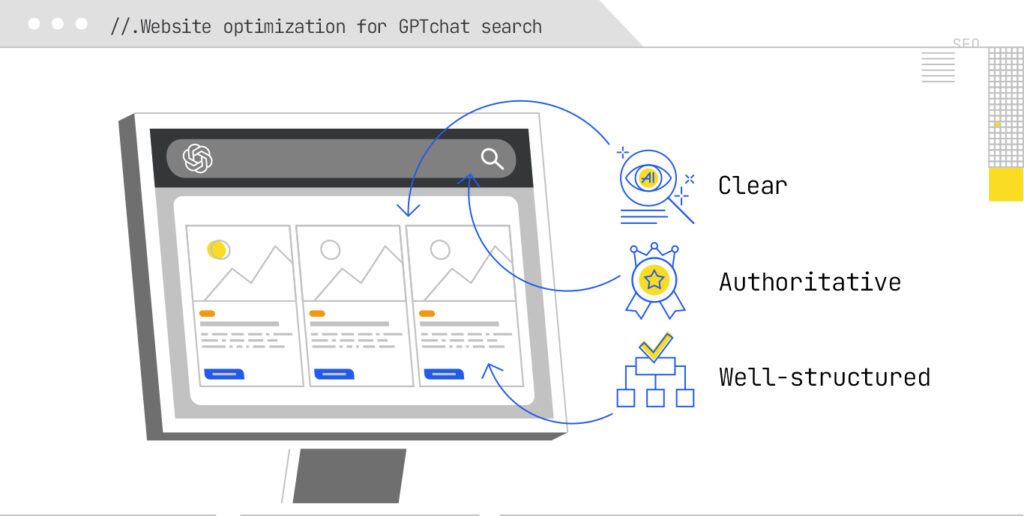
If your content is vague, unstructured, requires JavaScript, or buried behind confusing interfaces, ChatGPT might miss it entirely.
Even though OpenAI isn’t technically a search engine, people ask ChatGPT for product recommendations, learning resources, and how-tos. Some even skip Google entirely and go straight to AI for fast answers.
While its usage is lower than Google’s, ChatGPT experienced some of the fastest user growth in tech history, gaining its first 100 million users in just two months. Today, ChatGPT has more than 800 million weekly users, with over 3 billion visits per month. With integrations into Microsoft tools, iOS, Android apps, and plugins, it continues to expand and it’s become a key way for people to discover and engage with information.
Perplexity has quickly become one of the most credible players in the answer engine space. While Google and OpenAI dominate because of their massive user bases and product ecosystems, Perplexity stands out for its focus on:
Perplexity even contributed to the inception of the entire GEO industry, when researchers utilized the LLM to explore how to optimize rankings. Today, it boasts 15 million monthly active users.
For GEO, Perplexity is both an opportunity and a challenge:
If your site isn’t crawlable in real-time or lacks trustworthy sourcing, you’ll miss out here.
Anthropic’s Claude models are becoming a major force in the generative AI space by focusing on safety, alignment, and trust. From the start, Anthropic designed Claude to follow three core principles:
Anthropic hasn’t built a consumer search engine, but Claude powers discovery in a range of conversational products:
Launched in March 2023, Claude quickly grew a multi-million-user base. Today, it has 18.9 million global monthly active users.
Claude’s strength lies in conversational discovery, especially in professional and knowledge-driven environments. In GEO, Claude uses a broad training dataset combined with curated retrieval systems to surface and summarize relevant content.
However, for a while, it didn’t crawl the live web, which was a negative aspect as it was often pulling from outdated information.
For brands and publishers, this again means you must optimize content to be:
As its RAG capabilities expand, expect Claude to play a growing role in enterprise search, knowledge bases, and customer support.
Microsoft took a full-stack approach to generative AI, building its Copilot system into products people use every day and not just search.
In search, Bing’s Copilot works a lot like Google’s AI Overviews (though Copilot was first, released in early 2023 while AIOs rolled out in May 2024):
When it launched, it grew a user base of 18 million active users. Today, it sees around 37 million monthly users. However, Microsoft 365 has over 400 million paid seats, and Windows remains active on over 1.4 billion devices, so by embedding Copilot into Outlook, Word, Excel, and Edge, Microsoft is quietly turning generative search into a native part of everyday productivity.
Through Copilot in Microsoft 365, generative AI powers daily tasks like:
From a GEO perspective, Bing’s Copilot is a growing surface for content discovery. Copilot answers frequently cite web sources, meaning your content can appear in Microsoft’s AI-generated summaries.
However, keep in mind that Bing’s overall search market share is still smaller than Google’s. Google has 1 billion daily active users, while Bing has 100 million. In 2025, Google continues to dominate the global market, holding a 89.54% market share compared to Bing’s 3.98%.
For brands, this means your content should be ready for conversational queries, summaries, and task-driven AI interactions happening across the Microsoft ecosystem.
Both traditional and AI-driven search aim to help users find information, but how they do it differs.
Traditional Search (like classic Google):
AI Search (like Google AI Overviews, Perplexity, or ChatGPT with browsing):
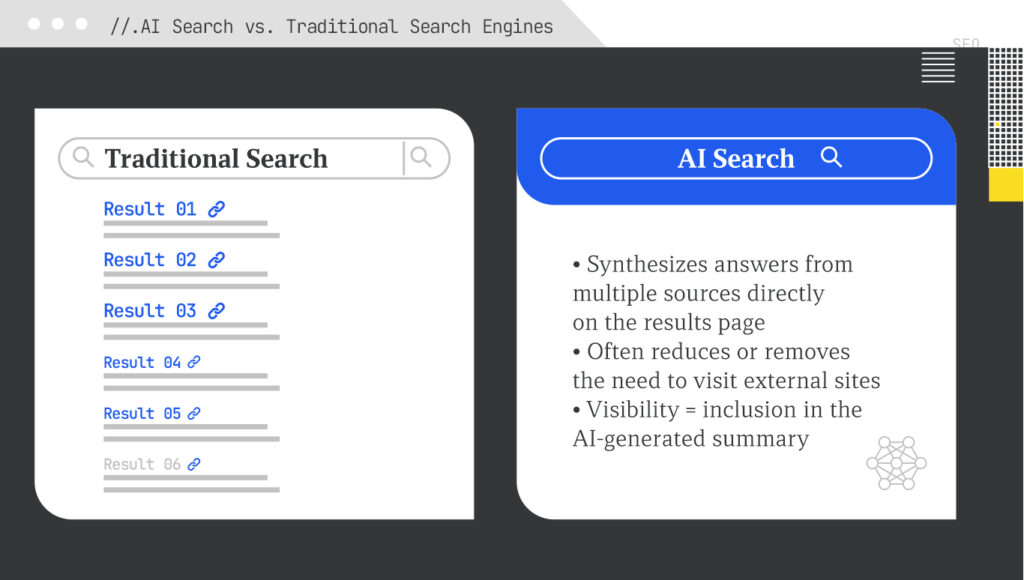
This change in how answers are delivered has a big impact on strategy.
Traditional SEO prioritized:
GEO (Generative Engine Optimization) focuses on:
This is a big shift for brands and publishers because a top organic ranking doesn’t guarantee visibility anymore. Well-structured, clear content often wins, even if it’s not from the biggest site.
Traditional Search | AI Search |
Ranked list of links | Summary compiled from multiple sources |
Requires clicking and researching | No need to click away |
Visibility = rank | Visibility = inclusion in AI summary |
Prioritizes:
| Prioritizes:
|
Generative AI models pull information in two ways:
This is the model most content creators are already familiar with, and how traditional search engines like Google and Bing have worked for decades. Crawlers request a page, extract the links, build a queue, and keep doing that until they find the end of the web.
LLMs like ChatGPT and Perplexity don’t “crawl,” they request, and they don’t index content or cache the pages so they are requesting in real time.
How it works:
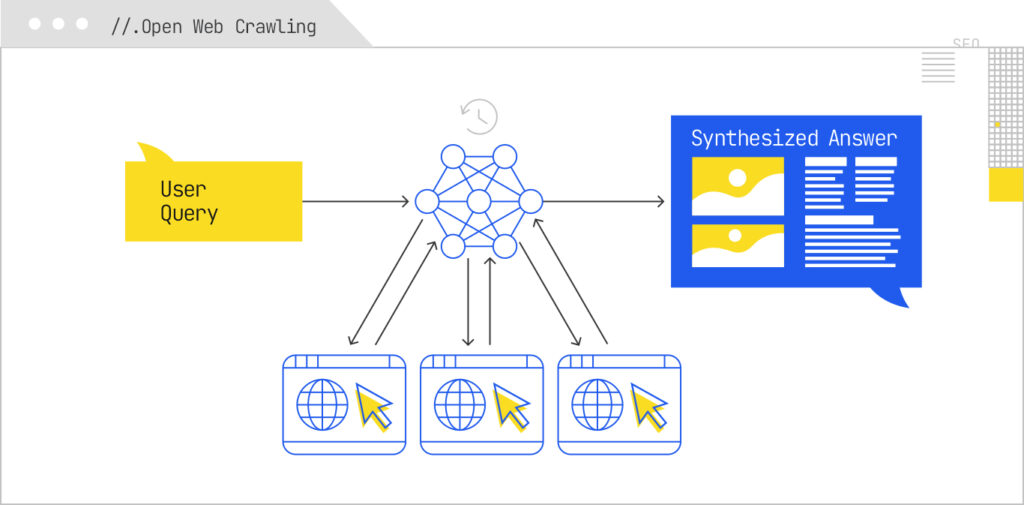
With this method, your content can be discovered and surfaced without additional setup. However, you often have little control over how your content is interpreted, summarized, or cited, and your content may appear in AI outputs without clear attribution.
This model gives AI systems structured, direct access to your content via approved APIs or data partnerships. This is used by ChatGPT and Microsoft’s Copilot integrations.
How it works:
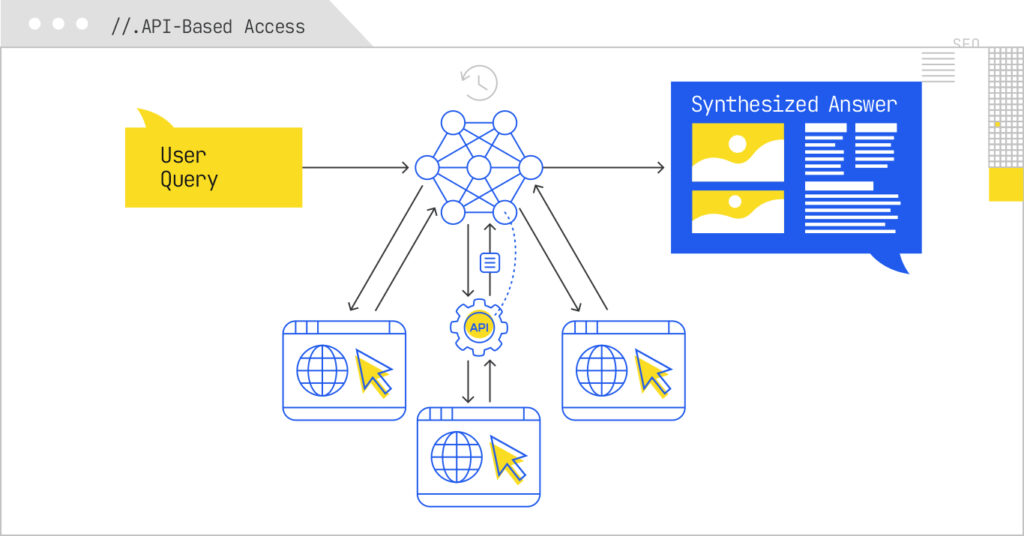
With this model, you retain more control over what data is shared, how it’s presented, and how often it’s updated. However, participation is often limited to companies with licensing deals or API infrastructure, and greater control may come at the cost of reduced organic visibility.
For brands and publishers, your discovery method shapes your visibility and influence in generative systems:
Each of the major players in AI search brings a different model, interface, and expectation to the way content is discovered. Generative Engine Optimization is still evolving, but one thing is clear: discovery lives across interfaces, in summaries, inside apps, and within conversations. Knowing how each platform works and how your content is accessed gives you the leverage to stay visible in this new layer of the web.
If your brand isn’t being retrieved, synthesized, and cited in AI Overviews, AI Mode, ChatGPT, or Perplexity, you’re missing from the decisions that matter. Relevance Engineering structures content for clarity, optimizes for retrieval, and measures real impact. Content Resonance turns that visibility into lasting connection.
Schedule a call with iPullRank to own the conversations that drive your market.

The appendix includes everything you need to operationalize the ideas in this manual, downloadable tools, reporting templates, and prompt recipes for GEO testing. You’ll also find a glossary that breaks down technical terms and concepts to keep your team aligned. Use this section as your implementation hub.
//.eBook

The AI Search Manual is your operating manual for being seen in the next iteration of Organic Search where answers are generated, not linked.
Prefer to read in chunks? We’ll send the AI Search Manual as an email series—complete with extra commentary, fresh examples, and early access to new tools. Stay sharp and stay ahead, one email at a time.
Sign up for the Rank Report — the weekly iPullRank newsletter. We unpack industry news, updates, and best practices in the world of SEO, content, and generative AI.
iPullRank is a pioneering content marketing and enterprise SEO agency leading the way in Relevance Engineering, Audience-Focused SEO, and Content Strategy. People-first in our approach, we’ve delivered $4B+ in organic search results for our clients.
We’ll break it up and send it straight to your inbox along with all of the great insights, real-world examples, and early access to new tools we’re testing. It’s the easiest way to keep up without blocking off your whole afternoon.
